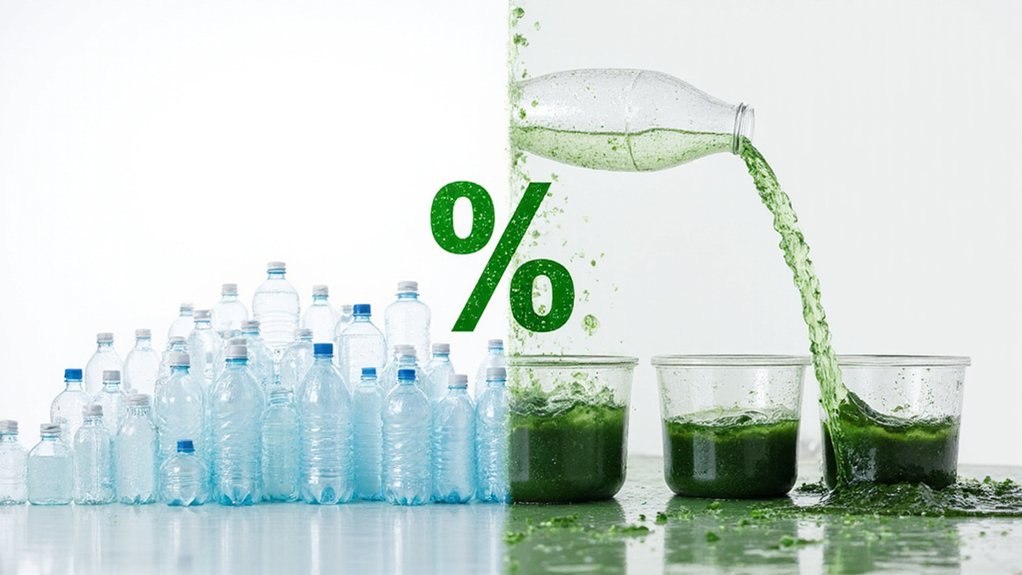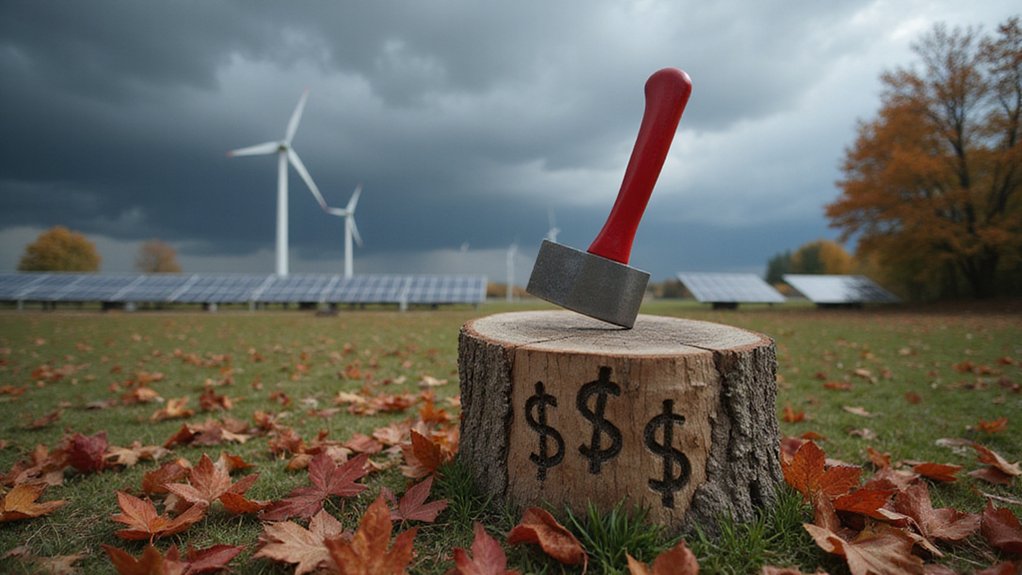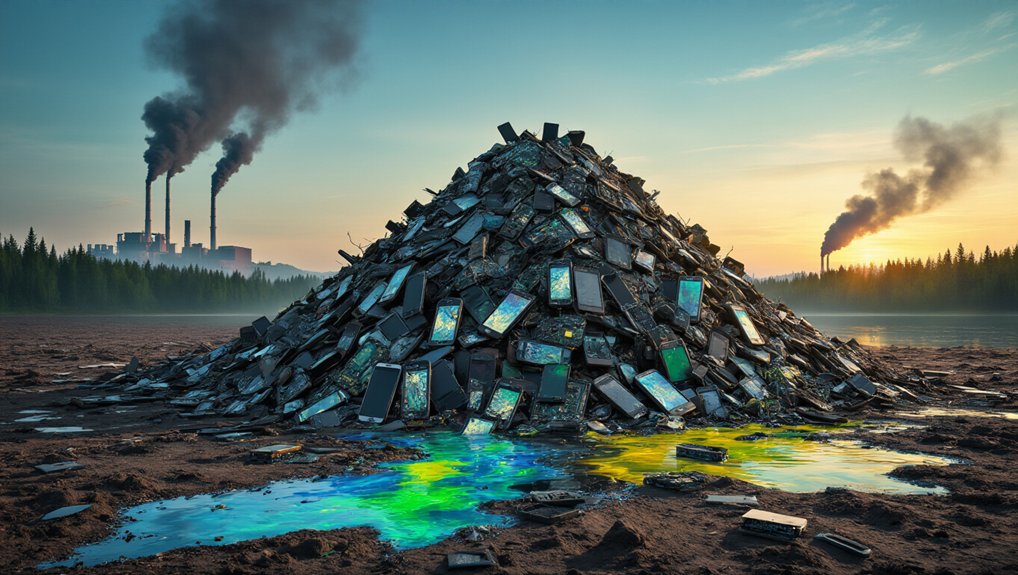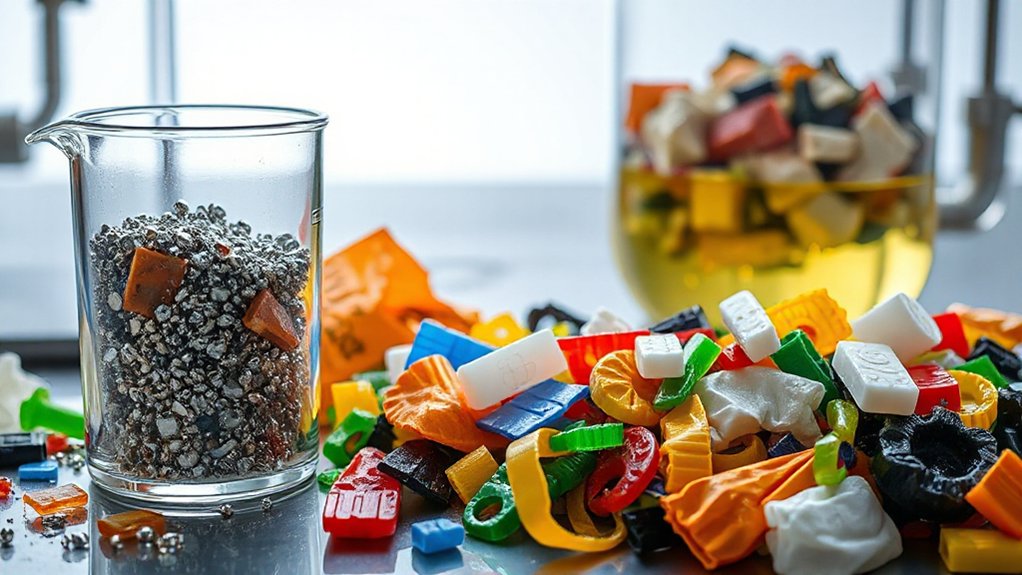While consumers proudly toss their plastic bottles into blue bins, the truth behind recycling claims remains murky at best. That 40% recycled content proudly stamped on your shampoo bottle? It might be an accounting trick rather than reality. Welcome to the world of mass balance — where numbers don’t always add up the way you’d expect.
The recycling industry employs two main approaches to calculating recycled content. Mass balance simply accounts for inputs and outputs without tracking what actually ends up in your product. Controlled blending, by contrast, physically traces materials throughout the entire process. Big difference. One lets companies make vague claims; the other demands precision.
Ever notice how some products boldly state “This bottle contains 60% recycled plastic“? That’s controlled blending at work. Others make hazier claims about “supporting recycling goals.” Classic mass balance sleight of hand. The math matters.
Look closely at packaging claims—the difference between “contains recycled plastic” and “supports recycling” reveals everything about corporate commitment.
Standard calculation formulas exist. Both EN 15343:2007 and ISO 14021:2016 outline the basic equation: Recycled content equals mass of recycled input divided by total product mass, times 100. Seems straightforward enough. Yet implementation varies wildly.
Verifying these claims? That’s another headache. Third-party certification requires traceability documentation, on-site audits, and quality control checks. Without these, recycled content claims aren’t worth the labels they’re printed on.
The recycled plastic supply chain is notoriously fickle. Availability fluctuates. Quality varies. Brands scramble to meet their sustainability promises with inconsistent materials. Some months they hit 50% recycled content; other months, barely 20%. The actual recycled content could fluctuate dramatically based on material availability in the market.
Regulatory frameworks attempt to bring order to this chaos. The EPA offers calculation tools. European standards establish methodologies. But jurisdictions differ in their requirements, creating a patchwork of approaches.
For consumers, the implications are significant. What you think you’re buying might not match reality. That “eco-friendly” packaging could be mostly virgin plastic with creative accounting making it look green. The free allocation of recycled content is prohibited under proper certification schemes, yet many companies continue to make unverified claims. The math behind recycled plastic is often just as disposable as the product itself.
References
- https://recyclass.eu/recycled-plastic/how-to-calculate-recycled-plastic/
- https://www.youtube.com/watch?v=YbpPJxK8iPI
- https://www.epa.gov/waste-reduction-model/recycled-content-recon-tool
- https://recyclass.eu/wp-content/uploads/2022/09/221005_RecyClass-for-Beginners_recycled-content_presentation-Final.pdf
- https://www.amaplast.org/archivioFiles/Allegati/Briefing Paper – Recycled Content.pdf









